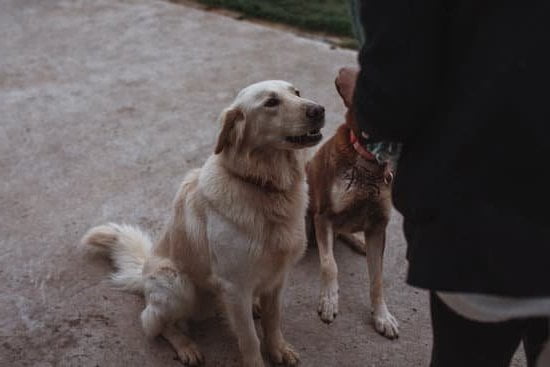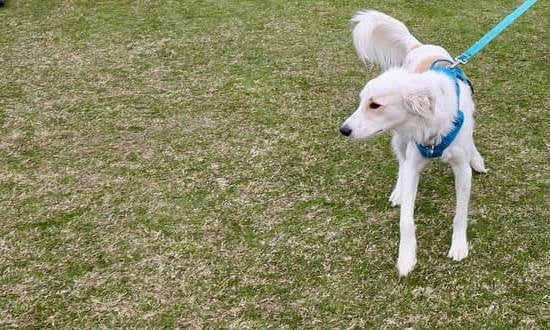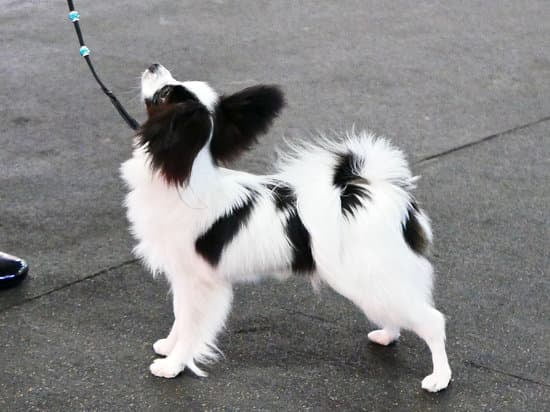Are you looking for effective and modern methods to train your dog? This article will provide a comprehensive guide on how to use a clicker and whistle for dog training. Whether you are a new pet owner or an experienced trainer, understanding the basics of clicker and whistle training can greatly improve the behavior of your furry friend.
Using a clicker and whistle for dog training has been proven to be an efficient way to communicate with your pet and reinforce positive behaviors. In this article, we will explore the science behind these training methods, provide step-by-step guides, troubleshoot common issues, and even discuss advanced techniques for clicker and whistle training.
By the end of this article, you will have a better understanding of how to incorporate these tools into your dog’s training regimen, ultimately leading to a well-behaved and obedient companion. So let’s dive into the world of clicker and whistle training and unleash your dog’s full potential.
Understanding the Basics of Clicker and Whistle Training
Clicker and whistle training are popular methods used by dog owners to teach their pets new behaviors and reinforce good behavior. These tools can be effective in communicating with your dog and creating a positive association with desired actions. Understanding the basics of clicker and whistle training is essential for successful dog training.
Below are the key elements to consider when using a clicker and whistle for dog training:
- Timing: One of the most critical aspects of clicker and whistle training is timing. The click or whistle should be used at the exact moment your dog exhibits the desired behavior. This helps your pet associate the sound with the specific action you want to reinforce.
- Consistency: Consistency is key when using a clicker and whistle for dog training. It’s essential to use the same sound every time your dog performs the desired behavior, so they can understand what is expected of them.
- Rewards: Clickers and whistles are often paired with positive reinforcement, such as treats or praise. When your dog hears the click or whistle, they should expect a reward for their good behavior.
Understanding these basic principles will set you on the right path to effectively using a clicker and whistle for dog training.
Once you have mastered the basics, you can begin incorporating more advanced techniques into your clicker and whistle training regimen. By understanding how these tools work and implementing them correctly, you can effectively communicate with your pet and improve their behavior through positive reinforcement.
The Science Behind Clicker and Whistle Training
Clicker and whistle training is based on the principles of classical conditioning and operant conditioning. In classical conditioning, a neutral stimulus (the click or whistle) is paired with a primary reinforcer (such as food or praise) to create an association between the two. Over time, the neutral stimulus becomes a conditioned reinforcer, meaning it elicits a response similar to that produced by the primary reinforcer.
In operant conditioning, behaviors are shaped through reinforcement and punishment. The clicker or whistle serves as a way to communicate to the dog that they have performed the desired behavior, making it easier for them to understand what you are asking for. This clear communication leads to faster and more effective learning.
Understanding Classical Conditioning
Classical conditioning involves pairing a neutral stimulus with a primary reinforcer to create an association between the two. In clicker training, the click sound becomes associated with something positive like a treat, creating an automatic response in the dog when they hear the sound.
Applying Operant Conditioning
Operant conditioning focuses on reinforcing desired behaviors through rewards. In clicker and whistle training, the use of positive reinforcement (such as treats or praise) after hearing the signal helps reinforce good behavior in dogs. This encourages them to repeat those behaviors in order to receive the same positive outcome.
By understanding these fundamental principles of classical and operant conditioning, you can see how using a clicker and whistle for dog training can be an effective way to communicate with your pet and shape their behavior in a positive manner.
Choosing the Right Clicker and Whistle for Your Dog
When it comes to choosing the right clicker and whistle for your dog, there are a few key factors to consider. The first step is to determine which type of clicker will work best for your dog.
There are various types of clickers available, including box clickers, button clickers, and even app-based clickers. Each type has its own advantages and disadvantages, so it’s important to choose one that you feel comfortable using and that your dog responds well to.
Similarly, when it comes to choosing a whistle for your dog, you’ll want to consider the frequency and sound of the whistle. Different whistles produce different frequencies of sound, and it’s important to choose one that is easily audible to your dog. Some whistles also come with adjustable frequencies, allowing you to customize the sound based on your dog’s preferences.
Additionally, it’s important to consider the size and design of both the clicker and whistle. You’ll want a clicker that feels comfortable in your hand and is easy to use during training sessions. Similarly, you’ll want a whistle that is compact and easy to carry with you wherever you go. Taking these factors into account will help ensure that both the clicker and whistle you choose are effective tools for training your dog.
The key to effectively using a clicker and whistle for dog training lies in proper technique and consistency. By following a step-by-step guide for their use in training sessions, pet owners can help their dogs learn new behaviors more quickly than they might through voice commands alone.
| Factors | Considerations |
|---|---|
| Type of Clicker | Choose one that works best for your dog’s response |
| Whistle Frequency | Consider how easily audible it is to your dog |
| Size and Design | Choose something that feels comfortable in hand |
Step-by-Step Guide to Clicker and Whistle Training
When it comes to dog training, using a clicker and whistle can be effective tools for communicating with your furry friend. In this section, we will provide a step-by-step guide on how to use a clicker and whistle for dog training.
Introduction to Clicker and Whistle Training
Clicker and whistle training is a form of positive reinforcement that involves using a clicker or whistle to mark desired behaviors in dogs. The sound of the clicker or whistle signals to the dog that they have performed the correct behavior and will be rewarded. This type of training is based on the principles of operant conditioning, where the dog learns to associate the sound with positive outcomes.
Understanding the Basics of Clicker and Whistle Training
Before diving into clicker and whistle training, it’s important to understand the basics of how these tools work. The clicker provides a consistent, distinct sound that can be easily recognized by the dog, while the whistle emits a clear, high-pitched tone. Both tools are used as markers to precisely indicate when a desired behavior has been performed.
Step-by-Step Guide
- Familiarize your dog with the clicker or whistle by associating it with treats. Each time you make the sound, immediately follow it with a treat.
- Once your dog understands that the sound means they will receive a reward, you can start using it during training sessions. For example, if you’re teaching your dog to sit, as soon as they lower their bottom towards the ground, make the sound of the clicker or blow the whistle and offer them a treat.
- Be consistent with your timing – ensure that you make the sound immediately after your dog performs the desired behavior.
- Gradually reduce treats over time but continue reinforcing good behavior with praise and intermittent rewards.
By following these steps and being patient and consistent in your training efforts, you can effectively use a clicker and whistle for dog training in order to teach your pet various commands and behaviors.
Troubleshooting Common Issues in Clicker and Whistle Training
When it comes to clicker and whistle training for your dog, you may encounter some common issues along the way. It’s important to troubleshoot these issues in order to ensure that your training sessions are effective and successful. Here are some common problems that may arise during clicker and whistle training, along with solutions to address them:
1. Lack of Understanding: One of the most common issues in clicker and whistle training is when your dog doesn’t seem to understand the connection between the sound and the behavior you’re trying to reinforce. This can be resolved by going back to the basics and ensuring that your dog has a clear understanding of the association between the sound, their actions, and a treat or reward.
2. Fear or Anxiety: Some dogs may be afraid of the sound of a clicker or whistle, which can hinder their ability to learn during training sessions. If this is the case, it’s important to desensitize your dog to the sound by gradually introducing it in a positive context, such as associating it with treats or playtime.
3. Inconsistency: Inconsistent use of the clicker or whistle can lead to confusion for your dog. To address this issue, it’s essential to be consistent with timing and delivery of the sound during training sessions. Use the clicker or whistle at the precise moment when your dog exhibits the desired behavior, followed by immediate reinforcement.
By addressing these common issues in clicker and whistle training, you can ensure that your dog is learning effectively and enjoying their training sessions. With patience, consistency, and positive reinforcement, you’ll be able to overcome these challenges and successfully train your dog using a clicker and whistle.
Advanced Techniques for Clicker and Whistle Training
Once your dog has mastered the basic commands using a clicker and whistle, you may want to explore advanced techniques to further enhance their training. One advanced technique is using the clicker and whistle in combination to train your dog.
For example, you can use the clicker for simple commands such as sit or stay, while using the whistle for more complex commands such as recall or agility training. This will help your dog differentiate between different commands and respond accordingly.
Another advanced technique is shaping behavior through clicker and whistle training. This involves rewarding successive approximations of the desired behavior until the full behavior is achieved. For example, if you are teaching your dog to roll over, you can use the clicker to reward them for any movement towards rolling over, gradually shaping their behavior until they fully execute the command.
It’s important to remember that advanced techniques should only be introduced once your dog has a solid understanding of the basic commands using a clicker and whistle. These techniques require patience, consistency, and positive reinforcement to be effective, so make sure to take your time and practice regularly with your dog.
| Technique | Description |
|---|---|
| Combining Clicker & Whistle | Use both tools for different commands |
| Shaping Behavior | Reward successive approximations of desired behavior |
The Benefits of Clicker and Whistle Training for Your Dog’s Behavior
In conclusion, incorporating clicker and whistle training into your dog’s behavior modification program can yield numerous benefits. By using a clicker and whistle for dog training, you can effectively communicate with your pet and reinforce positive behaviors. The use of these tools enhances the bond between you and your furry friend while providing mental stimulation and physical exercise.
One of the key advantages of clicker and whistle training is its ability to improve communication between you and your dog. These tools provide clear signals to your pet, helping them understand what behavior is desired. This results in faster learning and more consistent obedience. Additionally, clicker and whistle training can be particularly effective for distance commands or recall, as the sound carries further than vocal commands.
Furthermore, clicker and whistle training can have a positive impact on your dog’s behavior by promoting mental stimulation. The use of these tools requires the engagement of your dog’s mind, keeping them focused and alert during training sessions.
This mental exercise helps prevent boredom and may reduce behavioral problems such as excessive barking or destructive chewing. Overall, integrating clicker and whistle training into your routine not only improves behavior but also contributes to your dog’s overall well-being.
Frequently Asked Questions
How Do You Train a Dog With a Whistle and Clicker?
Training a dog with a whistle and clicker involves first associating each tool with positive reinforcement, such as treats. For the whistle, you would blow it and then reward the dog.
With the clicker, you would click and then offer a treat to create an association between the sound and a reward. Then, you can start using these tools during training sessions to reinforce desired behaviors in your dog.
Is a Clicker or Whistle Better for Dog Training?
Whether a clicker or whistle is better for dog training depends on your dog’s individual preferences and needs. Some dogs may respond better to the sharp sound of a whistle, while others might be more responsive to the distinct click of a clicker.
It’s important to observe how your dog reacts to each tool and choose the one that yields the best results during training sessions.
How Do You Use a Whistle and Clicker for Recall?
Using a whistle and clicker for recall involves practicing their use in different environments and gradually increasing distractions. Start by using the whistle or clicker when your dog is already coming towards you, then gradually use them at longer distances.
Pairing these tools with high-value rewards like treats or favorite toys can help reinforce the behavior of coming when called even in distracting situations.

Welcome to the blog! I am a professional dog trainer and have been working with dogs for many years. In this blog, I will be discussing various topics related to dog training, including tips, tricks, and advice. I hope you find this information helpful and informative. Thanks for reading!





